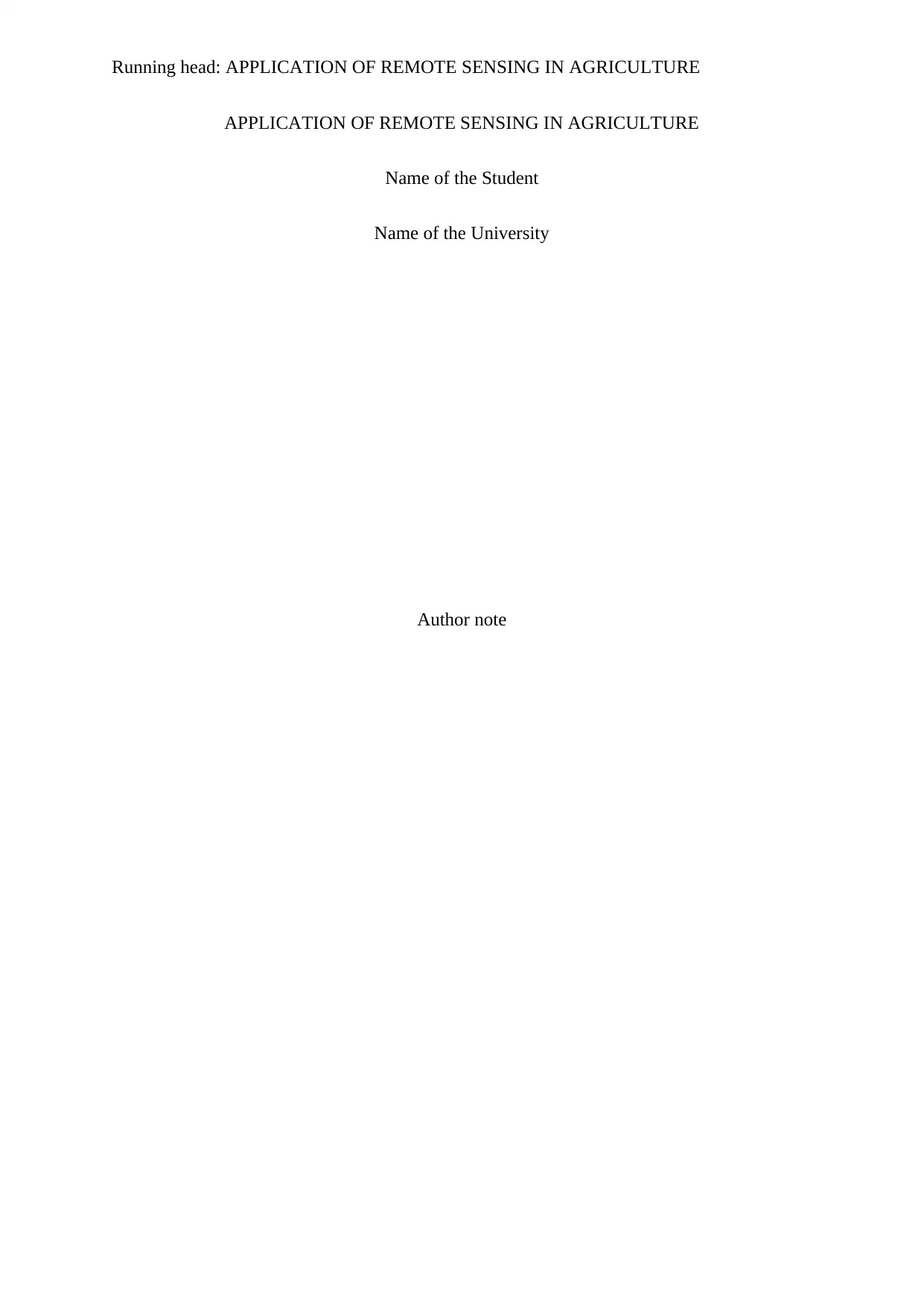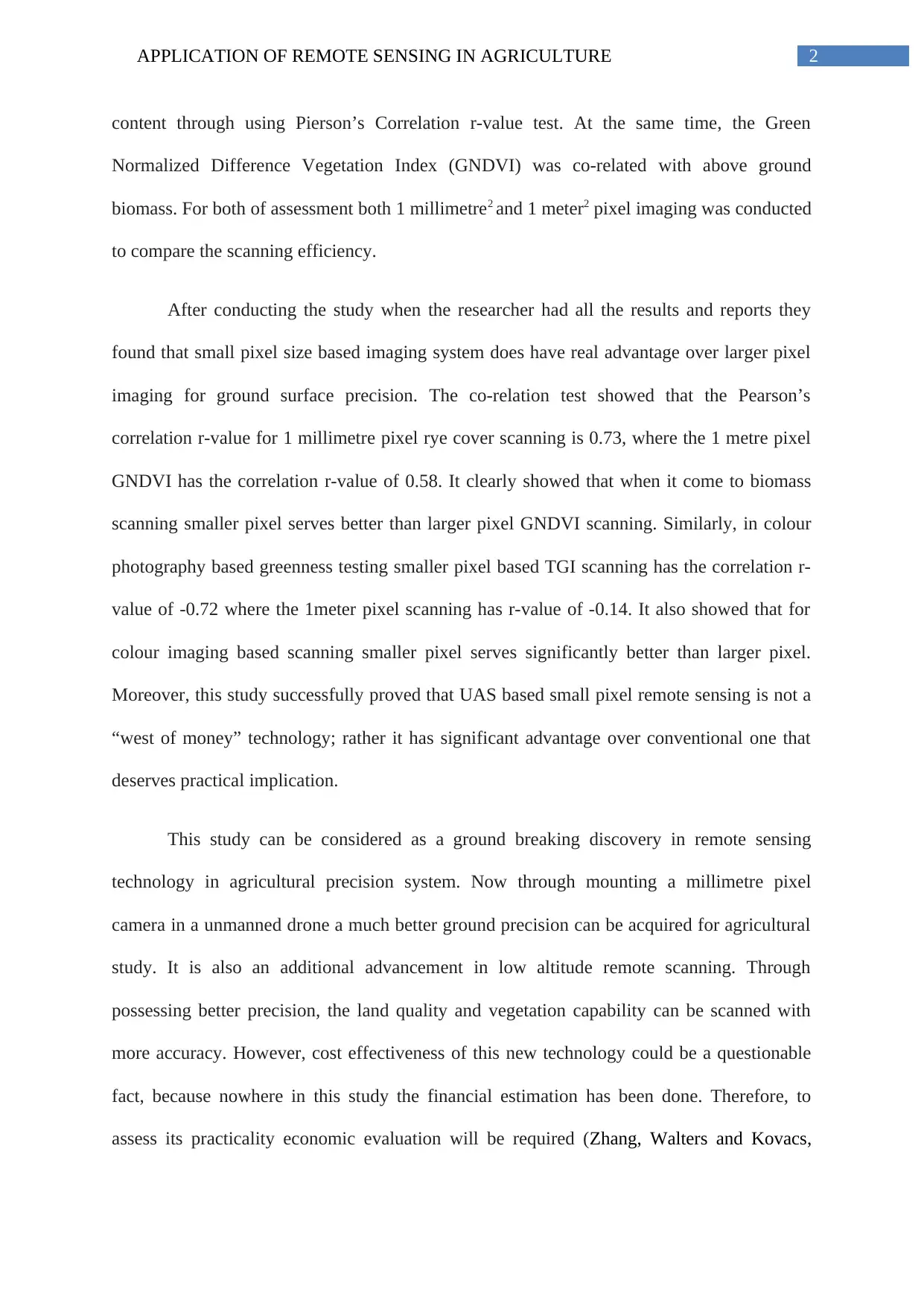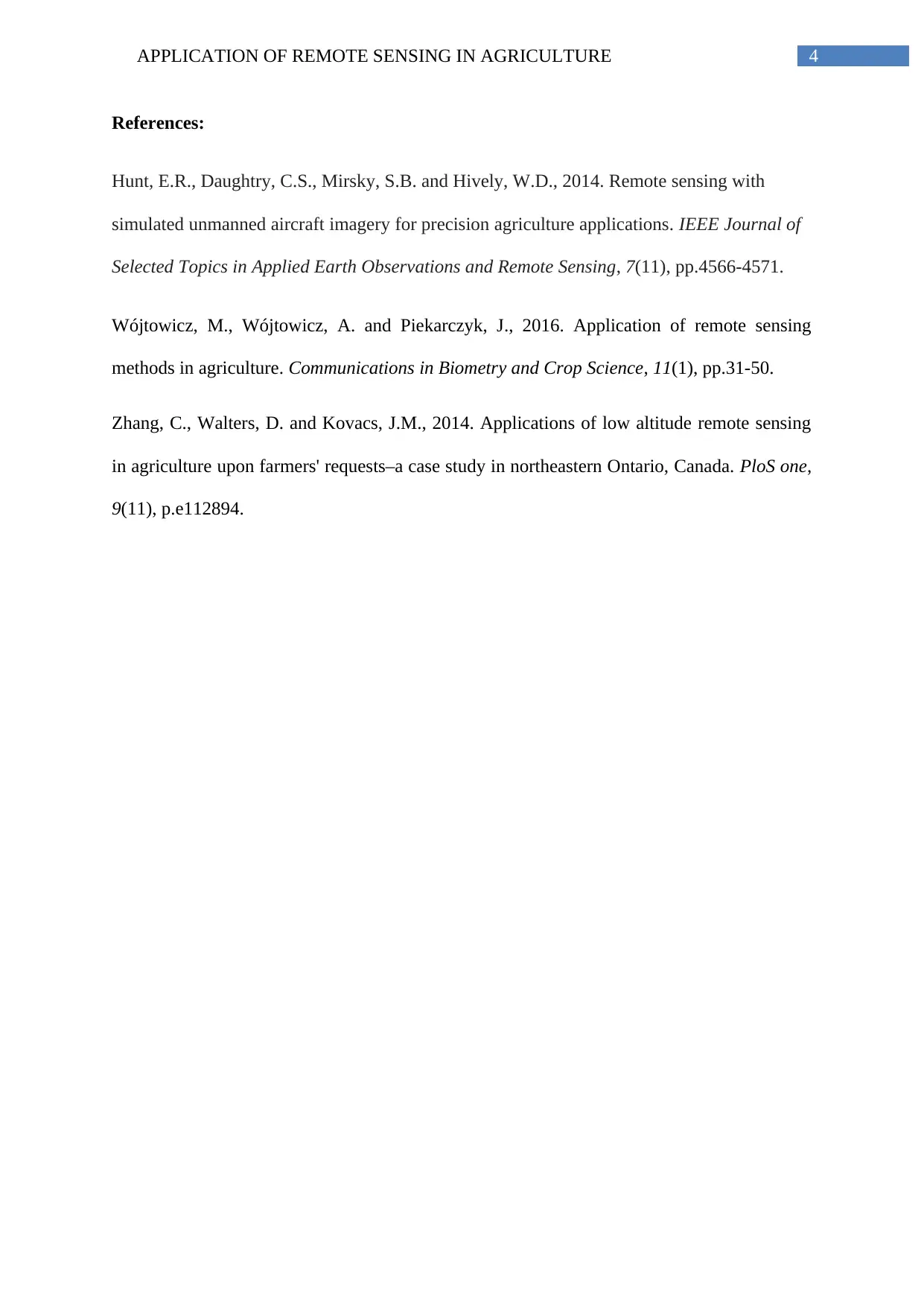Remote Sensing in Agriculture: University Report and Analysis
VerifiedAdded on 2023/01/03
|5
|910
|41
Report
AI Summary
This report examines the application of remote sensing technology in agriculture, focusing on the advancements made through unmanned aircraft systems (UAS). The primary research by Hunt et al. (2014) is analyzed, highlighting the use of UAS-based high-pixel scanning for improved ground surface precision. The study compares the efficiency of 1-millimeter and 1-meter pixel imaging systems in assessing biomass and leaf chlorophyll content in agricultural plots. The results demonstrate that smaller pixel sizes provide better accuracy in ground surface precision, as evidenced by Pearson's correlation r-values. The report also acknowledges the potential for cost-effectiveness analysis to determine the practicality of UAS-based remote sensing in agriculture, suggesting that this technology could revolutionize agricultural practices if proven economically viable. References to related studies are also included.
1 out of 5






![[object Object]](/_next/static/media/star-bottom.7253800d.svg)